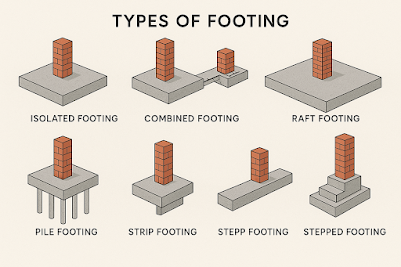In display present day development, to select the right
sort of building piece is basic for getting toughness, warm consolation, and
cost-efficiency. All through the lion's share, commonly utilized brick work
units are strong concrete pieces and AAC (Autoclaved Circulated air through
Concrete) pieces .Whereas both serve comparative basic purposes, they vary
essentially in their fabricating forms , properties, , applications, and
generally performance.
1. Composition and Manufacturing
• AAC Blocks: AAC squares are made from a blend of cement, lime, fly
cinder (or sand), gypsum, extension specialist (as a rule aluminum powder) and
water . The blend is poured into shape, where a chemical response causes it to
extend. The pieces are at that point autoclaved—cured beneath high-pressure
steam—to donate them quality and durability.
• Solid Concrete Blocks:Solid concrete pieces are made from a blend of cement,
totals (such as sand or pulverized stone), and water. They are compacted
utilizing high-pressure mechanical vibrations and are cured beneath typical
barometrical conditions or in steam curing chambers, but not autoclaved.
2. Weight and Density
• AAC Blocks: One of the standout highlights of AAC pieces is their
lightweight nature. They have a moo thickness, ordinarily extending from 550 to
650 kg/m³. The discuss pockets shaped amid the chemical response altogether
diminish their mass.
• Solid Concrete Blocks: These are much heavier, with densities extending from 1800
to 2300 kg/m³. Their strong structure contains no discuss crevices, making them
more enormous and more troublesome to handle amid construction.
3. Quality and Load-Bearing Capacity
• AAC Blocks: AAC squares have an normal compressive quality of 3–5
N/mm², which is by and large adequate for moo- to mid-rise buildings. Be that
as it may, for high-load-bearing applications, they may require extra
reinforcement.
• Solid Concrete Blocks: These squares have a higher compressive quality, ordinarily
7.5 to 10 N/mm² or more, making them reasonable for overwhelming load-bearing
dividers, establishments, and high-rise structures.
4. Warm and Sound Insulation
• AAC Blocks: Due to their permeable structure, AAC pieces offer fabulous
warm separator, keeping contribute cooler in summer and hotter in winter. They
too give great sound assimilation, making them perfect for private and commercial
buildings where consolation is a priority.
• Solid Concrete Blocks: While they do offer a few cover, concrete pieces are not as
compelling as AAC squares. Their thick structure implies they conduct warm and
sound more readily.
5. Workability and Ease of Use
• AAC Blocks: These pieces are simple to cut, shape, and introduce, much
appreciated to their moo thickness. Straightforward apparatuses like handsaws
can be utilized, making them helpful for builders and decreasing squander amid
construction.
• Solid Concrete Blocks: They are more troublesome to alter or cut and frequently
require control apparatuses. Dealing with is moreover labor-intensive due to
their weight.
6. Water Retention and Dampness Resistance
• AAC Blocks: AAC squares are more permeable, which can lead to higher
water assimilation if not appropriately fixed. Be that as it may, with the
redress waterproofing and putting, this can be mitigated.
• Solid Concrete Blocks: These are less permeable and have lower water assimilation
rates, making them more normally safe to dampness ingress.
7. Natural Impact
• AAC Blocks: AAC is considered an eco-friendly fabric. It employments
fly cinder, a squander byproduct from warm control plants, and requires less
crude fabric. The fabricating prepare, in spite of the fact that
energy-intensive (due to autoclaving), comes about in less development squander
and made strides vitality effectiveness of buildings.
• Solid Concrete Blocks: These squares have a higher carbon impression, as they
require more cement and common totals. Their generation moreover devours more
assets and energy.
8. Fetched Consideration
• AAC Blocks: The starting fetched of AAC pieces can be higher than that
of concrete squares. Be that as it may, the reserve funds in labor,
transportation, and putting materials regularly adjust the taken a toll over
the extend lifecycle. Furthermore, vitality reserve funds from warm cover can
diminish utility bills in the long term.
• Solid Concrete Blocks: They are by and large less costly forthright, which makes
them alluring for budget-conscious ventures. In any case, the higher labor and
basic costs may balanced the reserve funds, particularly in multi-story buildings.
9. Applications
• AAC Blocks: Ideal for private buildings, parcel dividers, high-rise
developments, and zones with temperature vacillations. Not suggested for
exceptionally tall load-bearing dividers without reinforcement.
• Solid Concrete Blocks: Suitable for establishment dividers, holding dividers,
boundary dividers, and heavy-duty development ventures that require more
noteworthy stack capacity.
10. Wrapping up and Aesthetics
• AAC Blocks: Provide a smooth surface, which decreases the require for
thick mortar. Wrapping up is faster and more cost-effective.
• Solid Concrete Blocks: Generally require thicker putting and wrapping up work,
which includes to labor and fabric costs.
• Conclusion
• Both AAC and strong concrete pieces have their claim set
of points of interest and confinements. AAC squares are favored for their
lightweight, separator properties, and natural benefits, making them
appropriate for advanced, energy-efficient buildings. Strong concrete squares,
on the other hand, offer prevalent quality and solidness, perfect for
load-bearing and fundamentally requesting applications.
• The choice between the two eventually depends on the
venture necessities, budget, and nearby climate conditions. Builders frequently
utilize a combination of both to optimize execution and taken a toll.


.png)
.png)

Comments
Post a Comment